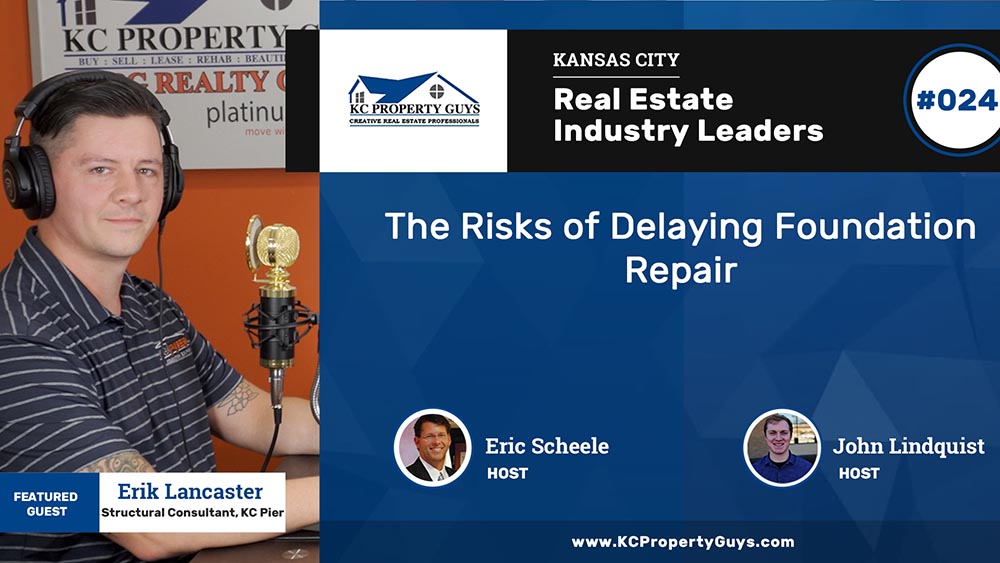Hello, and welcome to the real estate industry leaders podcast. I’m your host, John Lindquist. And with me today, I have Eric Sheele and Eric Lancaster. And we’re going to be talking about the different sorts of problems that you can have if you wait on foundation repair. And so with problems that you can have with your foundation, it comes in stages of severity. Is that correct?
Eric Scheele:
Absolutely.
John Lindquist:
So if we start at the least severe problem that you could allow to become bigger, where would we start for that? What’s the first sign that you need to jump on this and get a foundation repair?
Eric Scheele:
Yeah. And I think what we can do for this conversation, because this is great for homeowners and realtors. Let’s take it from a water perspective as well as a structural perspective. So we see both obviously. Eric is our structural consultant for foundation repair, one of our structural consultants in KC pier glad to have you in the studio…
Erik Lancaster:
Thank you.
Eric Scheele:
And chatting with us today on risks of delaying foundation repair. And of course we’re coming up on our winter months. And so we start to schedule and talk to our real estate offices throughout the winter months. And this is something that we do talk about a lot is levels of severity from foundation repair 101, all the way to the advanced and most severe cases. And what we’re going to try to tie in today is the financial piece that goes along with that. And what are some solutions that are out there for the minor, all the way up to the most severe.
So let’s start with water specifically. If you could walk us through Eric, some of the least expensive, most minor things that we see that normal homeowners and even our realtors will see in the house and then how can that progress if homeowners tend to ignore them for whatever reason.
The Risks of Delaying Foundation Repair
- November 5, 2020

